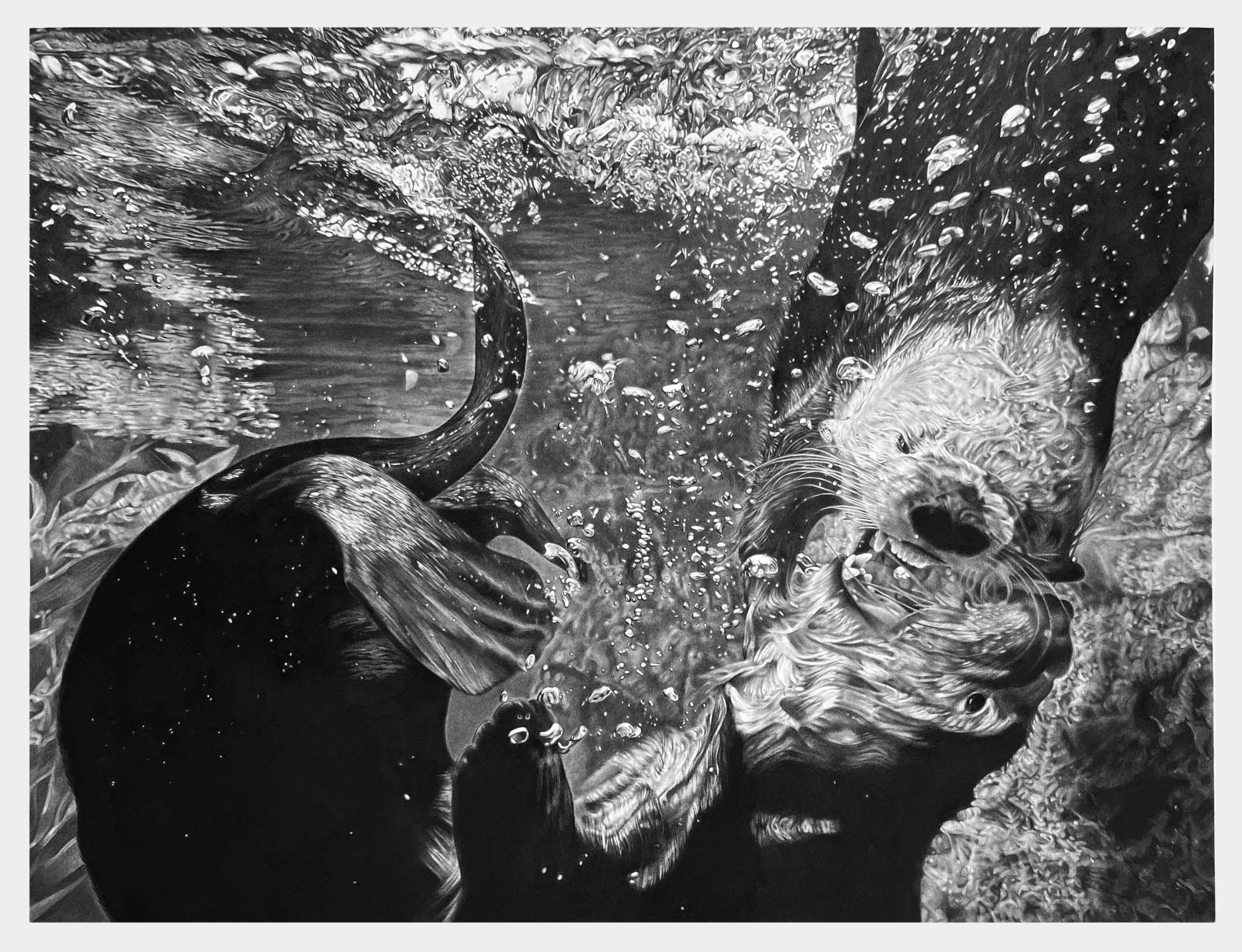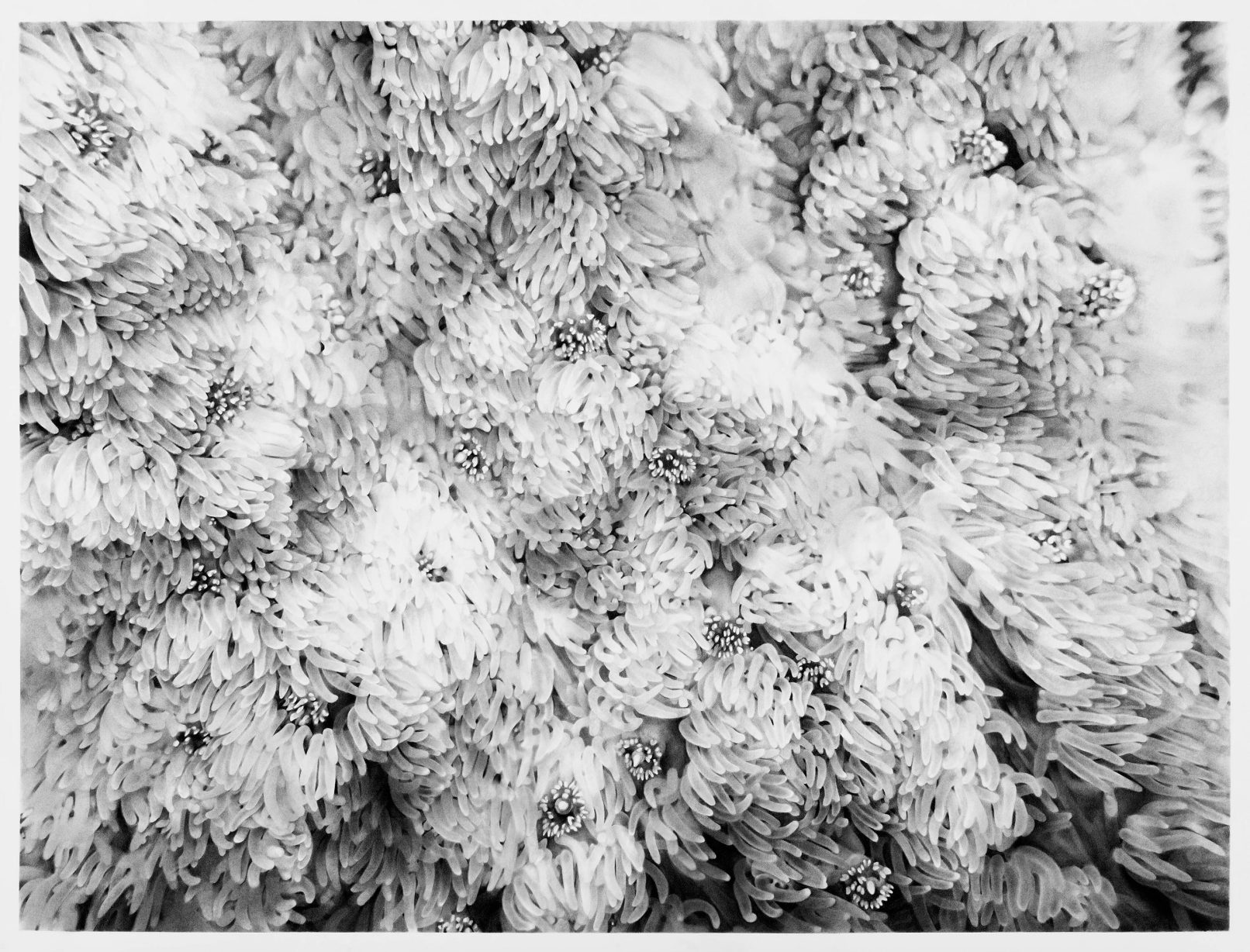Hold Fast | 2025
Hold Fast, a series of seven large charcoal drawings, invites the viewer to take a closer, slower, and stranger look at some of the key inhabitants affected by the decimation of Northern California’s kelp forests. It proposes that stewarding with integrity and wisdom requires us to first enter into intimate, witnessing relationships with the places and creatures we live alongside.
Between 2014 and 2025, Northern California’s bull kelp forests experienced dramatic decline, with some coastal areas losing 95% of their kelp cover. Climate change-driven ocean warming stunted kelp growth and enabled a marine disease epidemic to spread, primarily impacting sea stars and abalone. As sea star populations collapsed, their primary prey—sea urchins—exploded in number, and these kelp-eating purple sea urchins devoured the remaining kelp forests, reducing them to so-called urchin barrens. Abalone populations, weakened by overfishing, and struck by abalone wasting disease and loss of their kelp food source, also plummeted. While research and restoration projects conducted by local organizations are beginning to show promising results, significant work remains.
I began Hold Fast in 2019, after noticing the alarming transformation of the kelp habitats I regularly dove at, and realizing that the devastation, unseen below the veil of the ocean’s surface, was not receiving the visibility it deserved. My drawings are largely based on photographs I took while diving, with the exceptions of Sea Otters, which is based on photographs I took at the Monterey Bay Aquarium, and Largest Abalone Ever Found, which references an internet-sourced image. For me, the intense labor and photorealistic detail of my drawings are an expression of the kind of deep seeing and attending that relational environmental stewardship demands of us.
Hold Fast, the title of the series, takes its name from the part of kelp that anchors it to the sea floor and allows it to quickly regrow its fronds in the spring after being ravaged by unrelenting winter storms: the holdfast. It is a reminder of the tenacious resilience of life in the face of ecological crisis.

Charcoal on paper
40" x 40"
The interior of the shell of the largest abalone ever found. Abalone, whose main food is kelp, have suffered greatly from the collapse of Northern California’s kelp forests. Their populations have also been impacted by withering syndrome, a lethal disease exacerbated by increasing ocean temperatures.

Charcoal on paper
46" x 35.5"
This drawing shows the underside of a purple sea urchin, the species that is razing the kelp forests along the Pacific Coast. Once the urchin run out of kelp to eat, they enter a zombie-like state, blanketing the ocean floor in “urchin barrens” that are tenaciously stable once established.
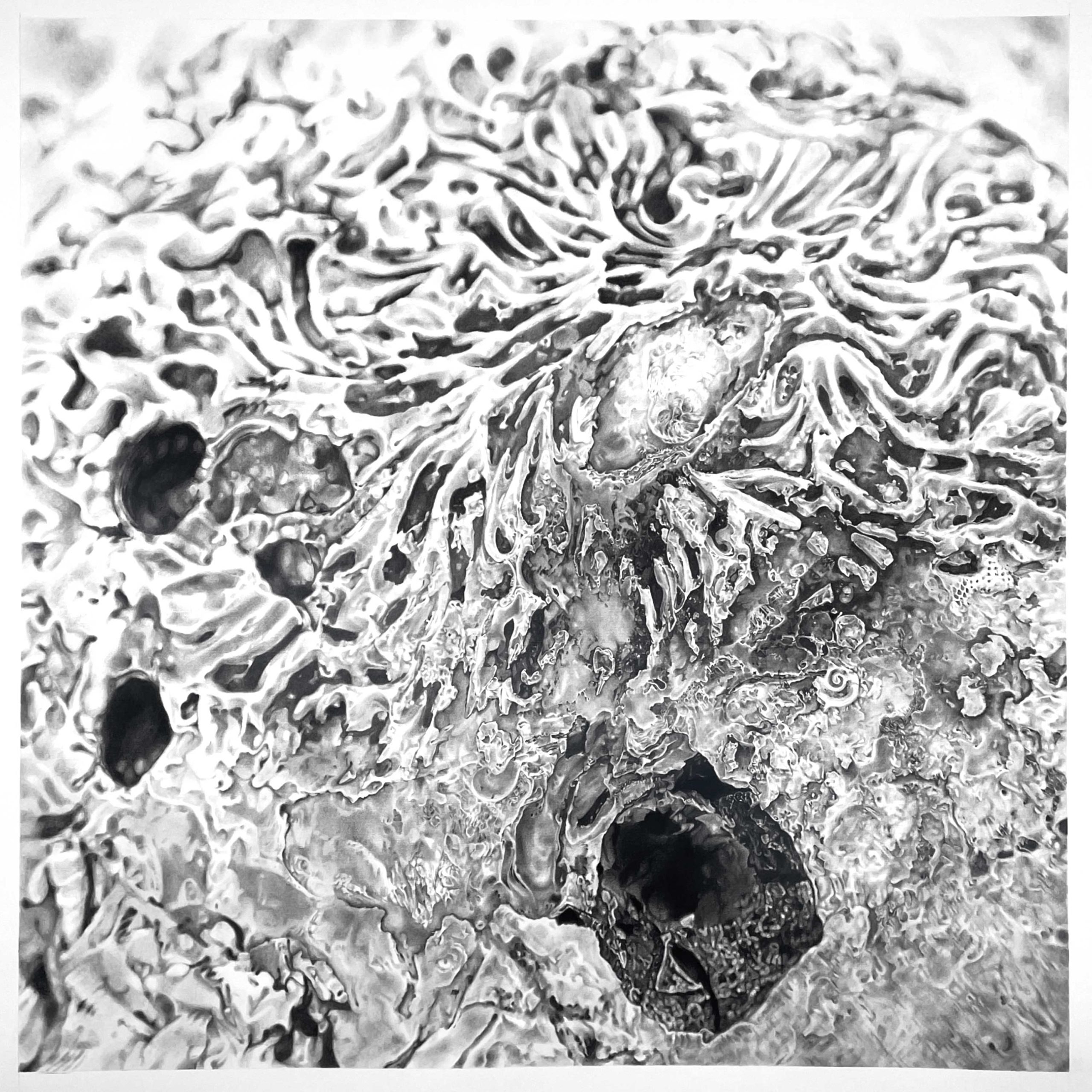
Charcoal on paper
40" x 40"
This drawing shows a close-up of the rugged exterior of an abalone shell that I found amongst a large pile of abalone shells in a hidden cove in Mendocino, CA. It was very likely a shell discard pile for abalone poachers. Large abalone can fetch hundreds of dollars each on the black market.
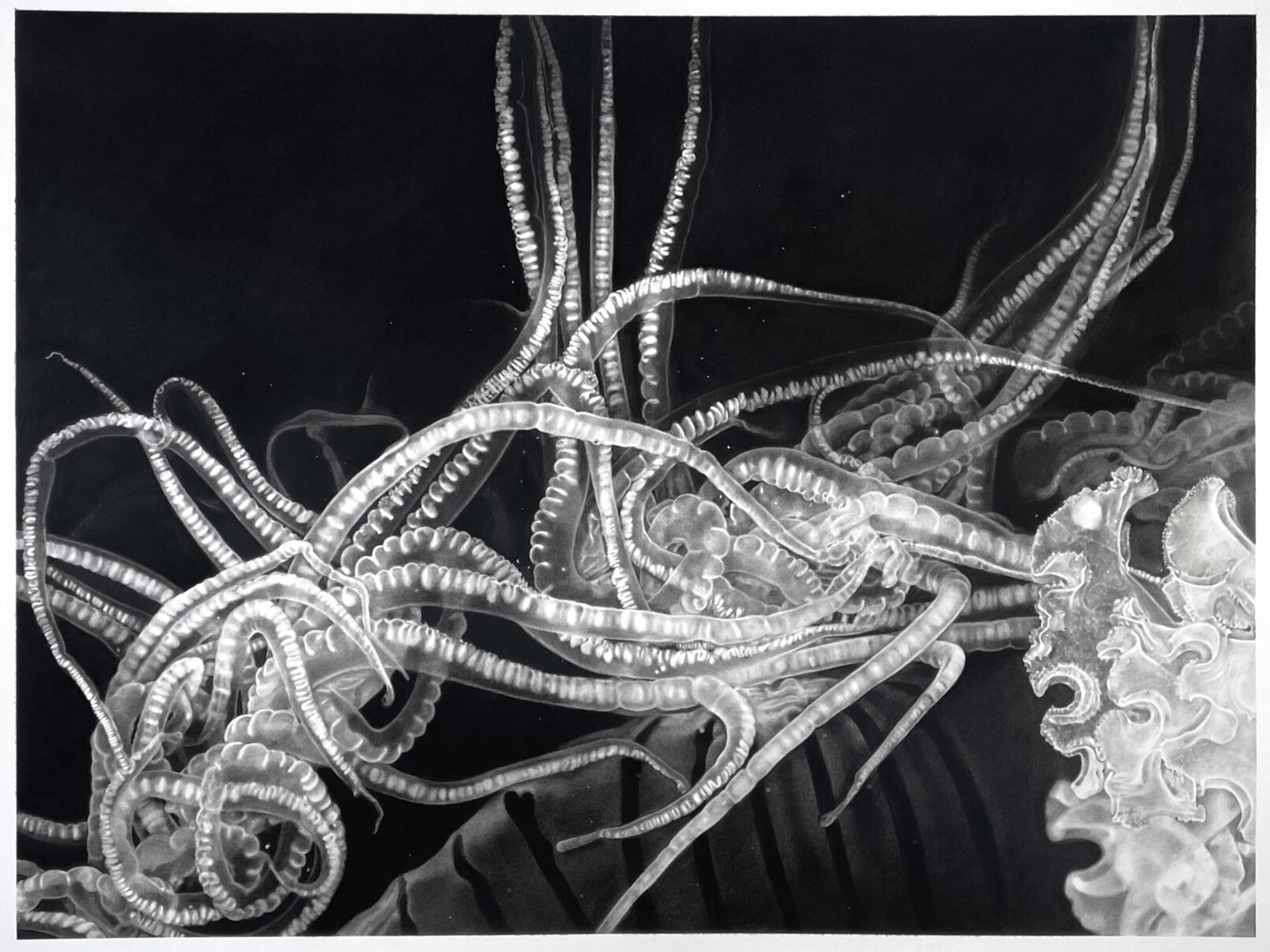
Charcoal on paper
46" x 35.5"
This drawing shows a jellyfish and is based on a photo I took in Gerstle Cove in Sonoma, CA. Previously one of my favorite diving spots because of its diverse and teeming kelp forest, the cove, at the time this photo was taken, had been almost entirely taken over by urchins.
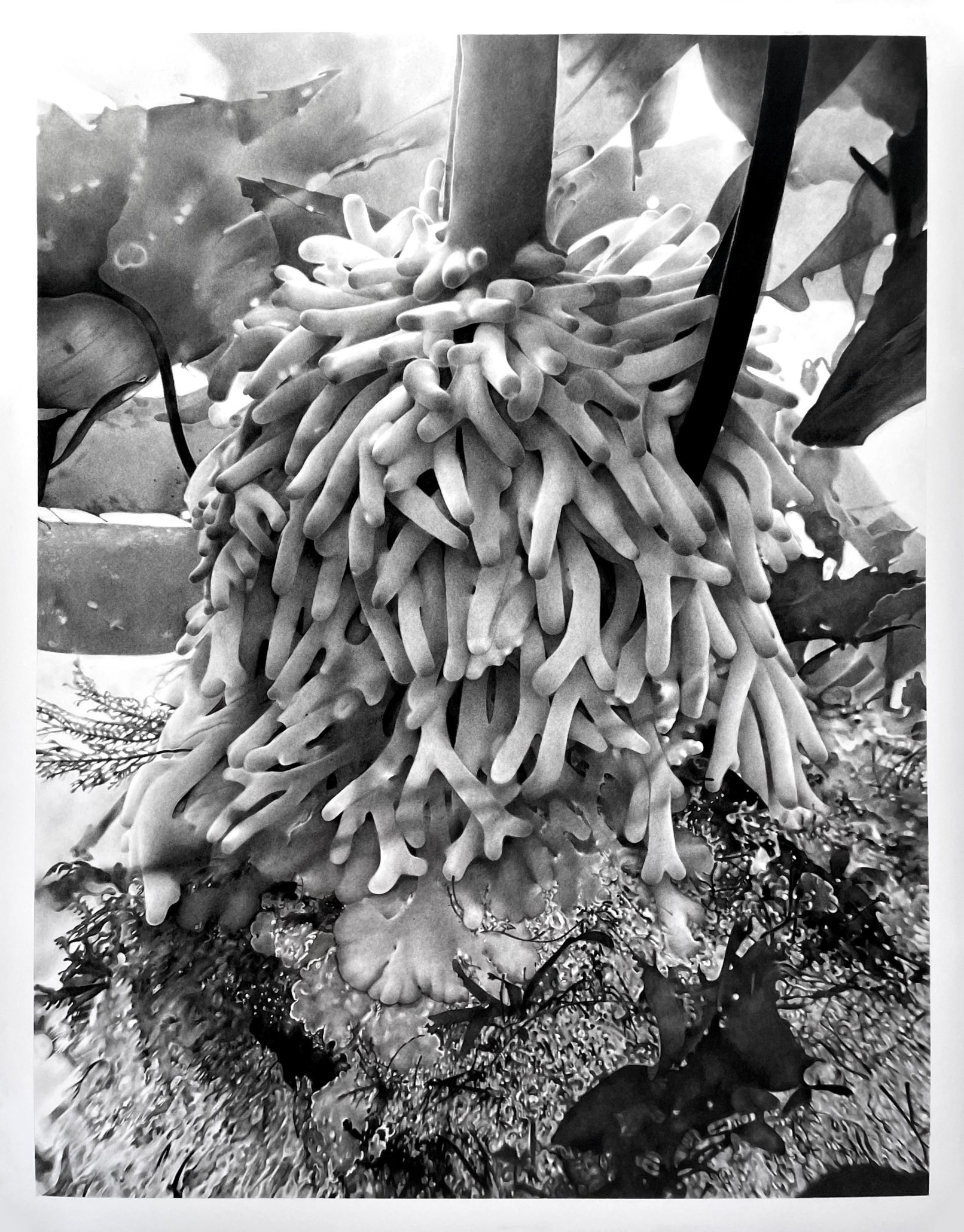
Charcoal on paper
35.5" x 46"
The holdfast is the part of the bull kelp that anchors it to a substrate. A climate change-induced population explosion of kelp-eating sea urchin, have meant that many holdfasts, which usually survive year-round allowing quick regrowth, have been eaten down, impairing annual regrowth and resilience.
